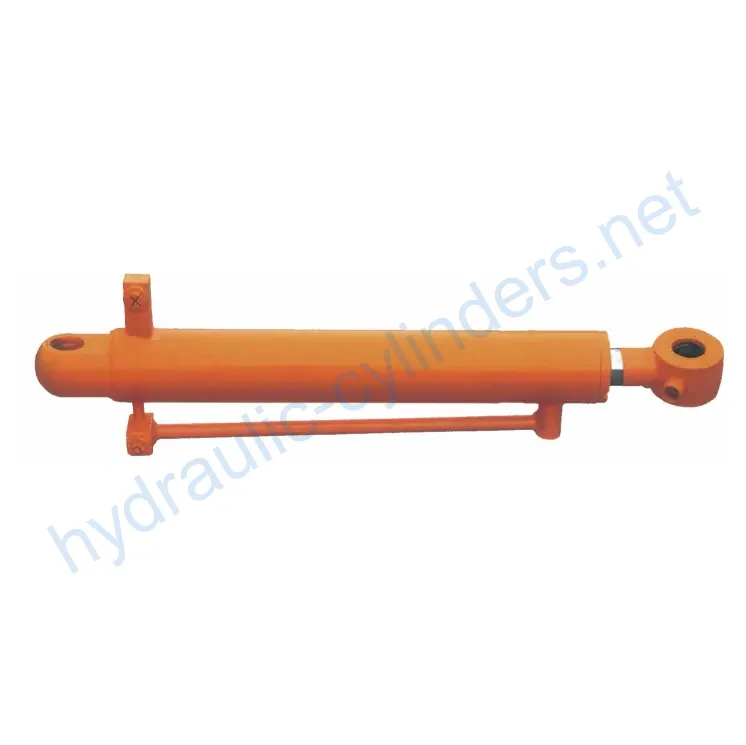Bucket Cylinder For Caterpillar Large Excavator E374FL
Като един от производителите, доставчиците и износителите на хидравлични цилиндри, ние предлагаме хидравлични цилиндри и много други продукти.
Моля, свържете се с нас за подробности.
Поща:sales@hydraulic-cylinders.net
Производител, доставчик и износител на хидравлични цилиндри.
Bucket Cylinder For Caterpillar Large Excavator E374FL
Introduction
The bucket cylinder for Caterpillar large excavator E374FL is a specially designed hydraulic cylinder that controls the movement of the bucket in heavy machinery such as excavators, backhoe loaders, and front-end loaders. Its main function is to enable the bucket to lift, lower, and tilt, making it suitable for various material handling tasks. In the hydraulic system, the bucket cylinder utilizes the pressure changes of hydraulic oil to achieve precise control of the bucket, allowing operators to handle heavy loads efficiently and adapt to complex work environments and diverse operational needs.
Definition and Explanation
The bucket cylinder for Caterpillar large excavator E374FL is a hydraulic cylinder specially designed to control the movement of the bucket. It enables the bucket to perform lifting, lowering, and tilting actions, facilitating various material handling tasks. The cylinder operates by utilizing the pressure changes of hydraulic oil in the hydraulic system, allowing precise control of the bucket’s movements. This ensures efficient handling of heavy loads and enables adaptation to complex work environments and diverse operational requirements.

Features
- High Strength and Durability: Typically made of high-strength steel or aluminum, the bucket cylinder can withstand high pressure and heavy loads, adapting to harsh working environments. Its design takes into consideration wear resistance and corrosion resistance, extending its lifespan.
- Efficient Hydraulic Operation: By utilizing the pressure of hydraulic oil, the bucket cylinder achieves smooth extension and retraction actions, quickly responding to control commands and providing powerful pushing and pulling forces. It is suitable for handling heavy loads and complex operational tasks.
- Multiple Types: The bucket cylinder can be selected as single-acting (hydraulic pressure used in one direction only) or double-acting (hydraulic pressure used in both directions) based on the operational needs. Some models are telescopic, allowing greater extension without increasing the external dimensions, making them suitable for applications with limited space.
- Perfect Replacement: Our product can perfectly replace other hydraulic cylinders. We offer a wide range of options for different excavator models.

Applications
The bucket cylinder for Caterpillar large excavator E374FL finds its applications in various industries, including:
Construction Equipment
In excavators, the bucket cylinder is crucial for excavation, loading, and material movement. In backhoe loaders, the bucket cylinder aids in both digging and lifting.
Agricultural Machinery
Used in front-end loaders, the bucket cylinder is involved in tasks like scooping, lifting, and transporting soil, hay, and other materials.
Excavators
The bucket cylinder enables excavation by allowing the bucket to penetrate the soil.
Loaders
In front-loaders, the bucket cylinder assists in lifting and dumping cargo effectively.
Each application is characterized by:
- Description 1
- Description 2
- Description 3
- Description 4
- Description 5

Design Considerations and Selection Criteria
When designing the bucket cylinder for Caterpillar large excavator E374FL, several factors are taken into consideration:
Bearing Capacity
The bucket cylinder is designed to withstand high-pressure loads and heavy loads, ensuring reliable performance in demanding working conditions.
Sealing
The cylinder incorporates various sealing components, such as piston seals and rod seals, made of wear-resistant materials like polyurethane and nitrile rubber. The cylinder body and threaded ends undergo fine processing to enhance wear resistance. Regular lubrication with hydraulic oil is necessary to ensure smooth operation.

Maintenance and Preventive Measures
Regular Inspection
Regularly inspect the bucket cylinder for any signs of wear, leaks, or damage. Ensure all connections are secure and functioning properly.
Proper Lubrication
Apply appropriate lubrication to the cylinder to reduce friction and ensure smooth operation. Refer to the manufacturer’s guidelines for the recommended lubrication schedule.
Seal Replacement and Calibration Checks
Periodically check and replace worn seals to maintain proper sealing performance. Perform calibration checks to ensure accurate control of the cylinder.

Safety Considerations and Environmental Factors
When working with the bucket cylinder, it is essential to follow safety precautions to prevent accidents and ensure a safe working environment. This includes:
Proper Training
Ensure that personnel operating and maintaining the bucket cylinder are properly trained to handle it safely.
Safety Measures
Implement safety measures such as wearing appropriate personal protective equipment and following safe operating procedures.
Troubleshooting and Common Issues
When troubleshooting bucket cylinder issues, consider the following common problems:
Issue 1
Description of issue 1.
Issue 2
Description of issue 2.
Issue 3
Description of issue 3.
To resolve these issues, consider the following tips and solutions:
- Troubleshooting Tip 1
- Troubleshooting Tip 2
- Troubleshooting Tip 3

Installation Guide
Proper installation of the bucket cylinder is crucial for its performance and longevity. Follow these steps for correct installation:
Step 1: Alignment
Ensure proper alignment of the cylinder during installation. Use appropriate alignment tools and techniques to ensure a precise fit.
Step 2: Mounting
Use suitable mounting brackets or fixtures to securely fasten the cylinder in place during installation.
Step 3: Inspection
After installation, inspect all connections, seals, and fasteners to ensure they are tight and properly secured.

About Our Company
We are a manufacturer of replacement hydraulic cylinders and a leading manufacturer and wholesale distributor in the domestic and international markets. We adhere to the principles of excellence and rely on industrial production management strategies in our refined manufacturing workshops. Our company continuously improves the manufacturing platform by investing in technological talent, digital high-end manufacturing
Take a Tour of Our VR Factory:
Take a tour of our VR factory with the following
Hydraulic Cylinder Application:


